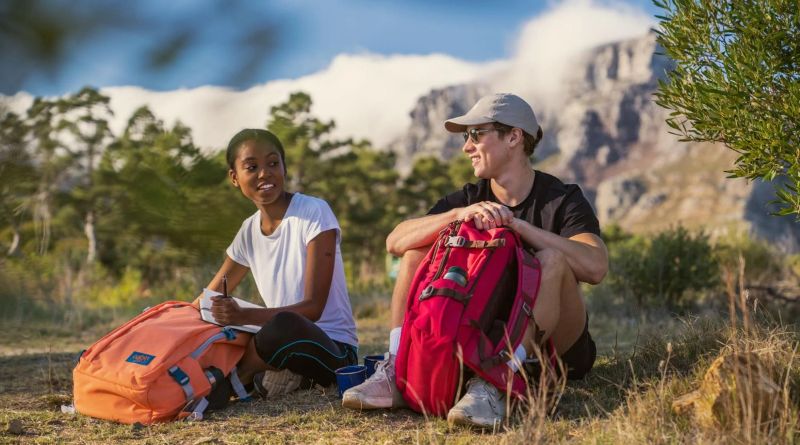When it comes to hiking, having the right equipment is essential to ensuring a safe and enjoyable experience. While boots, clothes, and navigation tools are all crucial, your hiking backpack is arguably one of the most important pieces of gear. Whether you’re embarking on a short day hike or tackling a multi-day backcountry adventure, your backpack will carry your essentials and keep them organized.
In this article, we’ll break down everything you need to know about hiking backpacks, from types and features to choosing the best one for your needs. Plus, we’ll answer some frequently asked questions to help guide your decision-making process.
Table of Contents
Why Is a Good Hiking Backpack Important?
A well-chosen hiking backpack is more than just a bag to hold your belongings. It serves several important functions:
- Comfort: A properly fitting backpack will make your hike more comfortable, helping distribute the weight evenly across your body to avoid unnecessary strain on your shoulders, back, and hips.
- Organization: Hiking backpacks are designed to help you organize your gear, with multiple compartments and pockets for storing water, food, first aid kits, extra clothing, and other necessities.
- Protection: A good hiking backpack will protect your gear from the elements, keeping items dry and secure during your hike.
- Accessibility: With the right features, your backpack makes it easier to access your most-needed items while on the trail, whether it’s your map, camera, or snacks.
Types of Hiking Backpacks
Hiking backpacks come in a wide range of sizes, designs, and features. Choosing the right one largely depends on the type of hike you plan to do. Here are the most common types:
1. Daypacks
A daypack is a small, lightweight backpack designed for short, single-day hikes. These packs typically range from 15 to 30 liters in volume, offering enough space for water, snacks, a jacket, and other essentials for a day trip.
- Best for: Day hikes, short excursions, urban hikes, or hiking with minimal gear.
- Features: Usually have one or two compartments, a hydration sleeve, and a few external pockets. Some also come with a rain cover.
2. Overnight Backpacks
If you’re planning a one- or two-night trip, an overnight backpack (also known as an overnight hiking pack) typically ranges from 30 to 50 liters. These packs offer more space to carry sleeping bags, food, a tent, and other camping gear, yet still remain lightweight enough for relatively short treks.
- Best for: Weekend trips, short camping trips, or hiking with basic camping gear.
- Features: More room for camping gear, often with extra compartments or loops for carrying a tent or sleeping pad. They may include features like adjustable straps and padded hip belts to better distribute weight.
3. Multi-Day Backpacks
For longer treks that last several days, multi-day backpacks are essential. These packs range from 50 to 80 liters and offer ample storage for tents, sleeping bags, food, and extra clothing.
- Best for: Extended backpacking trips, multi-day treks, and wilderness expeditions.
- Features: Plenty of space for larger gear, including hydration systems, sleeping bags, and cooking equipment. They often come with adjustable suspension systems, a fully padded hip belt, and compression straps to stabilize heavy loads.
4. Hydration Packs
A hydration pack is a small, lightweight backpack that comes equipped with a built-in hydration bladder. These packs are perfect for short hikes, trail runs, or mountain biking, where you want to stay hydrated without carrying a lot of extra weight.
- Best for: Quick day hikes, running, biking, or hiking in hot conditions.
- Features: Includes a hydration reservoir (usually 1.5–3 liters), a hose to drink from while on the move, and usually one or two small pockets for essentials like snacks and a phone.
Key Features to Look for in a Hiking Backpack
When choosing a hiking backpack, there are several important features to consider. These elements will help ensure your comfort and convenience on the trail:
1. Fit and Comfort
A backpack that fits well is essential for comfort, especially on longer hikes. Most hiking backpacks come in different sizes (small, medium, large) based on the torso length of the wearer. Some brands offer adjustable torso lengths or even gender-specific designs. A well-fitted pack should distribute weight evenly, minimizing pressure points.
- Padded shoulder straps: Help reduce strain on your shoulders.
- Padded hip belt: Distributes the load to your hips, where your body is stronger.
- Ventilated back panel: Helps with airflow to reduce sweating.
2. Volume and Capacity
As mentioned, the size of your backpack will depend on the length of your hike. Choose a pack with just enough space for your gear without being overly large. If you pack too much gear, it can weigh you down unnecessarily.
- Small packs (10–30 liters): Ideal for day hikes and lightweight excursions.
- Medium packs (30–50 liters): Suitable for one to two-day trips with moderate gear.
- Large packs (50+ liters): Necessary for extended backcountry trips where you’ll be carrying camping gear.
3. Accessibility and Organization
A good hiking backpack should make it easy to access your gear while you’re on the move. Look for features like:
- Multiple compartments and pockets: To organize your gear and make items easy to access.
- Side water bottle pockets: Ideal for quick access to hydration.
- Front or top-loading: Depending on your preference, some backpacks offer a top opening, while others offer a more convenient front-load design for easy access to all of your items.
4. Durability and Materials
Hiking backpacks need to be tough and durable, capable of withstanding the wear and tear of the trail. Look for a pack made of high-quality, water-resistant materials like ripstop nylon, polyester, or high-density fabrics that will resist abrasions and keep your gear dry.
5. Hydration Compatibility
Many hiking backpacks come with built-in hydration bladder sleeves, which allow you to insert a hydration reservoir (like CamelBak). This feature allows you to drink water easily while on the move, reducing the need to stop and take off your backpack to access a water bottle.
6. Weather Protection
Some hiking backpacks come with built-in rain covers that can be pulled out in case of bad weather. This feature is essential if you’re hiking in unpredictable conditions, as it keeps your gear dry.
Tips for Packing Your Hiking Backpack
Packing your backpack properly is just as important as choosing the right one. Here are a few packing tips:
- Pack the heaviest items close to your back and towards the middle of the pack. This helps keep the weight balanced and reduces strain.
- Use compression straps to stabilize the load and reduce the size of your pack when it’s not full.
- Keep essentials like snacks, sunscreen, and a first aid kit easily accessible in the top compartment or side pockets.
- Store fragile items (like electronics or cameras) in padded or protected areas of the pack.
- Don’t overpack: Carry only what you’ll need for the trip, as an overpacked backpack will be uncomfortable and inefficient.
Frequently Asked Questions (FAQs)
1. How do I know what size hiking backpack to buy?
Choosing the right size backpack depends on the length of your trip. For day hikes, a 15–30 liter pack should suffice. For overnight hikes, a 30–50 liter pack is ideal. For multi-day treks, look for a 50–80 liter pack. It’s also important to consider your torso length to ensure a comfortable fit.
2. What is the best hiking backpack for a beginner?
For beginners, a daypack (15–30 liters) is a good starting point. Look for a pack with adjustable straps, comfortable padding, and a few organizational features. Brands like Osprey, Deuter, and REI offer great options for new hikers.
3. What features are essential for a hiking backpack?
Key features to look for include a comfortable fit, hydration compatibility, durable materials, and sufficient organization options. A padded hip belt and ventilated back panel are also important for comfort, especially on long hikes.
4. Can I use a regular backpack for hiking?
While you can use a regular backpack for short, easy hikes, it’s not ideal for longer or more demanding treks. Regular backpacks lack the support, organization, and durability that a purpose-built hiking pack provides. For serious hiking, investing in a hiking-specific backpack is recommended.
5. How much weight should my hiking backpack be?
The weight of your pack will depend on the length of your hike and the gear you need to carry. For day hikes, aim for a backpack weighing 10-15 pounds (4.5-6.8 kg), and for multi-day hikes, you should try to keep the weight under 20-30 pounds (9-13.6 kg), depending on your fitness level.
Conclusion
Choosing the right hiking backpack is essential to having a comfortable and successful hike. Whether you’re looking for a lightweight daypack or a robust multi-day trekking pack, it’s important to consider factors like fit, capacity, durability, and features to find the best option for your needs. With the right backpack, you’ll be






